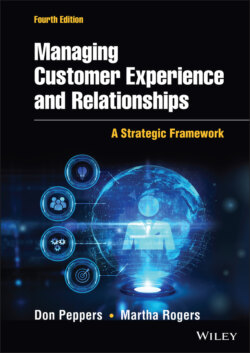Читать книгу Managing Customer Experience and Relationships - Don Peppers - Страница 15
How to Think About Relationships and Customer Experience as Key to Business Strategy
ОглавлениеThe move to a customer-strategy business model has come of age at a critical juncture in business history, when managers are deeply concerned about declining customer loyalty as a result of greater transparency and universal access to information, declining trust in many large institutions and most businesses, and increasing choices for customers. As customer loyalty decreases, profit margins decline, too, because the most frequently used customer acquisition tactic is price cutting. Enterprises are facing a radically different competitive landscape as the information about their customers is becoming more plentiful and as the customers themselves are demanding more interactions with companies and creating more connections with each other. Thus, a coordinated effort to get, keep, and grow valuable customers has taken on a greater and far more relevant role in forging a successful long-term, profitable business strategy.
If the last quarter of the twentieth century heralded the dawn of a new competitive arena, in which commoditized products and services have become less reliable as the source for business profitability and success, it is the new computer technologies and applications that have arisen that assist companies in managing their interactions with customers. These technologies have spawned enterprise-wide information systems that help to harness information about customers, analyze the information, and use the data to serve customers better. Technologies such as enterprise resource planning (ERP) systems, supply chain management (SCM) software, enterprise application integration (EAI) software, data warehousing, sales force automation (SFA), marketing resource management (MRM), and a host of other enterprise software applications have helped companies to mass-customize their products and services, literally delivering individually configured communications, products, or services to unique customers in response to their individual feedback and specifications.
The accessibility of the new technologies is motivating enterprises to reconsider how they develop and manage customer relationships and map the customer experience journey. More and more chief executive officers (CEOs) of leading enterprises have identified shifting to a customer-strategy business model as a top business priority for the 21st century. Technology is making it possible for enterprises to conduct business at an intimate, individual customer level. Indeed, technology is driving the shift. Computers can enable enterprises to remember individual customer needs and estimate the future potential revenue the customer will bring to the enterprise. What's clear is that technology is the enabler; it's the tail, and the one-to-one customer relationship is the dog.
